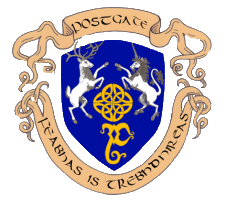Luckenbooth Pink Sapphire Pendant in 18K Gold including 18" 14K 1.9mm cable link gold chain reserved for Catherine Hayward
Luckenbooth Pink Sapphire Pendant An original designed and created by George. This pendant is styled as a Scottish
luckenbooth, made with great care and respect for the Scottish tradition that inspired it. This is the perfect gift for your Scottish sweetheart! follow this link to see our other Scottish and Celtic jewelry that is for sale on our website:https://postgatejewelers.com/product-category/scottish-jewelry-irish/
Luckenbooth Pink Sapphire Pendant, Details:
The pendant is made of 18K yellow gold and it has a fine quality oval faceted natural Burmese pink sapphire @ 0.44cts
as it’s center stone. The pendant is approximately 25mm high X 15mm wide. The stone is from old stock @ 1970, and has a very deep pavilion which makes it particularly brilliant.
I believe that these stones are now unavailable. The crown of the pendant is set with two 2mm brilliant cut diamonds,
Vs2 G-H. and a 3mm 0.13ct faceted natural pink sapphire The replacement value of the pendant is $1410.00 02/02/2024
Special orders:
You can order a special order of this pendant in any Kt or color gold that we work with. We also have a wide variety of gemstones that you can specify in a custom order. This link will take you to a page that has some images of special pieces we've made for our customers in the past:https://postgatejewelers.com/special-order-jewelry/
FaceBook:
We have a wide selection of our work on FaceBook. Some pieces are shown in various stages of completion. When we do a special piece for a customer we often send them image of waxes. This makes it easier for them to understand what we are doing. It also allows us to work together and insure the creation of something special: https://www.facebook.com/Postgate-Fine-Jewelers-111540785537658/photos/?view_public_for=111540785537658
Luckenbooth Pink Sapphire Pendant, a brief history of the Scottish Luckenbooth:
The luckenbooth dates from the late sixteenth century. It originated as a pin that merchants wore in Edinburgh along the
"Royal Mile" who sold their goods out of locked booths.The pins had to be worn to show that the merchant had purchased
a license to sell their goods.
The first luckenbooth brooches were very small. A tradition developed in which the luckenbooth was given to a man’s
sweetheart on their betrothal. It was also considered a lucky charm, that would protect its wearer against the evil eye.
Among the other powers attributed to the luckenbooth was easing the pain of childbirth and ensuring a good supply of
breast milk when pinned to a woman’s petticoats near the left thigh. If pinned to a baby’s shawl, it will protect the child
from being stolen by fairies.
During the 18th and 19th centuries the luckenbooth became larger and more elaborate often inscribed on the back with
biblical quotes or the names or initials of the couple and the date of their wedding.
In the late 1800's the intertwined hearts that form the lower half of the brooch came to resemble the letter M. Fleur de lys
and thistles also became common elements. These became known as Mary’s Brooches or "Queen Mary’s Brooches". This
was because Mary Queen of Scots’s husband, Lord Darnley gave her one.
In Victorian times they were often set with garnets. Garnets were believed to have a positive influence on love and symbolized love,
constancy, and friendship. The Victorian versions of the luckenbooth brooch were decorated with gems of different colors.
Scottish fur traders exchanged simple silver luckenbooths for furs with Native Americans who loved them. Some of these
brooches have been passed down for generations in those native families!









Reviews
There are no reviews yet.